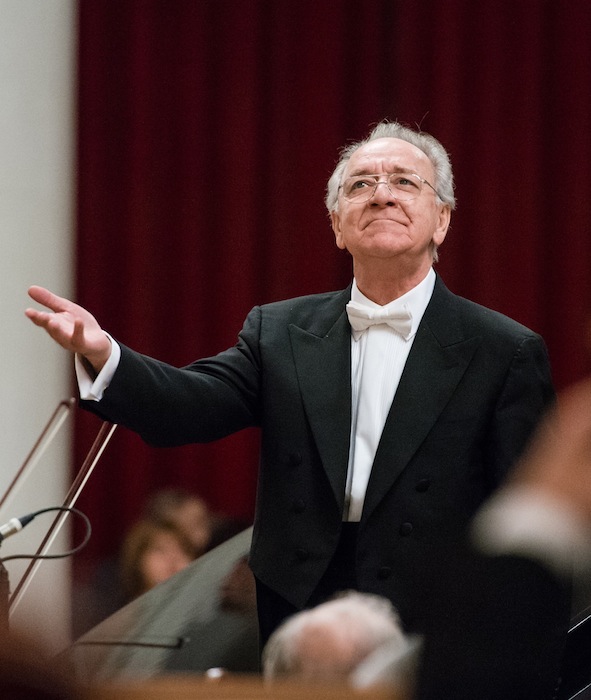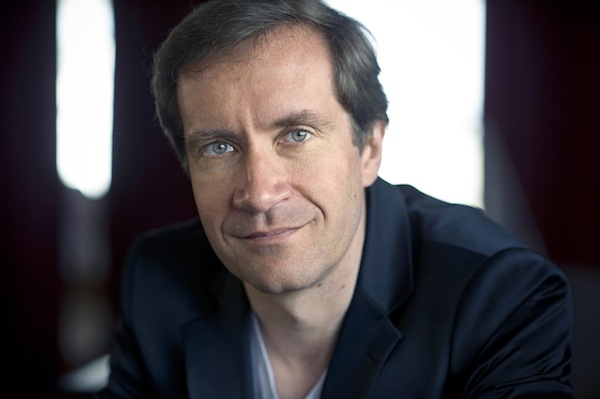Lugansky, St. Petersburg Philharmonic, bring power and poetry to Brahms, Shostakovich

The St. Petersburg Philharmonic returned to Chicago Sunday night with a myaso and katofel program under Yuri Temirkanov.
Two big works by Brahms and Shostakovich comprised the concert at Symphony Center, making a worthy calling card for this venerable Russian orchestra, now in its 28th season under artistic director Temirkanov.
The celebrated ensemble remains an inspired and cohesive group of gifted musicians. The Philharmonic can’t match the refinement and tonal sheen of the Chicago Symphony Orchestra or the world’s other top ensembles, and there were some less-than-airtight wind entrances in the first half. But in its brawny power and responsive musicianship, the St. Petersburg Philharmonic remains a force to be reckoned with.
Brahms’ Piano Concerto No. 1 in D minor is likely the least often played of the “great” keyboard concertos. For the soloist, the balance between violent upheaval and lyrical repose is a constant challenge, and even today few pianists possess the power and stamina to conquer this 50-minute leviathan.
Nikolai Lugansky is clearly one of those chosen few. As shown in his take-no-prisoners 2012 CSO debut in Rachmaninoff, the Russian pianist possesses one of the most complete and remarkable keyboard arsenals of our day. He brought massive sonority and faultless technique to the concerto’s daunting demands, encompassing the stormy eruptions of the opening movement as well as the optimistic energy of the finale.
Yet even more impressive than the bravura, Lugansky conveyed Brahms’ inward moments with honest, affecting expression. He brought supple delicacy to the first movement’s second theme, and a stoic, searching eloquence to the Adagio. Every note radiated meaning, even in the final cadenza, which had more nuanced expression than the usual quick drive-by en route to the coda.
Temirkanov provided his younger compatriot with close-knit, comparably sensitive support. The dark Russian strings sounded especially Brahmsian under Temirkanov’s graceful baton-less direction. Their hushed playing echoed the pianist’s phrasing attentively, and the full orchestra delivered the surging drama with firm impact.
Repeated curtain calls and ovations brought Lugansky back out for a finely colored encore of the Intermezzo from Schumann’s Faschingsschwank aus Wien.
Both Temirkanov and the St. Petersburg Philharmonic have long associations with Dmitri Shostakovich and his music, the orchestra having premiered five of Shostakovich’s symphonies.
The composer’s much-played Symphony No. 5 was a populist programming choice. But Sunday’s muscular, full-blooded performance provided a fascinating–at times counterintuitive–take on this familiar score by a conductor who is among the world’s most esteemed Shostakovich interpreters.
Temirkanov led a flowing, objective and unsentimental performance that downplayed the brooding darkness of the opening movement. The militaristic marchlike theme went with satiric swagger and the development hurtled along with frantic energy leading to an imposing climax.
The Russian musicians’ forceful, committed playing was unassailable throughout. Personality-plus woodwinds made the Scherzo less dour and genuinely amusing for once. Even in the bleakly ruminative Largo, Temirkanov led a performance that was vividly characterized without crossing the line to tragedy. The conductor drew playing of tremendous intensity from the strings, and the woodwinds conveyed the qualitiy of a lonely voice in a desolate wilderness.
The finale led off with tremendous energy creating ample excitement at a speedy tempo. In the much-debated closing section Temirkanov segued fluently into a stark broadening of tempo, which had the desired effect of making the coda seem grandly massive yet ceremonial and starkly empty amid all the clamor.
The large Russian contingent in the hall led the enthusiastic ovations until Temirkanov obliged the audience with an encore–the Amoroso section from Prokofiev’s Cinderella, which was beautifully played and unapologetically lush of tone.
Posted in Performances





